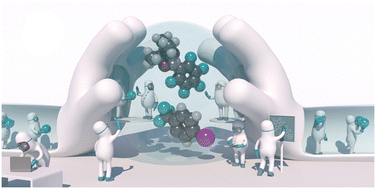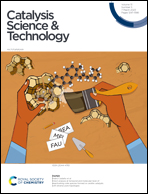Application of statistical learning and mechanistic modelling towards mapping the substrate electronic space in a Cu-catalyzed Suzuki–Miyaura coupling†
Abstract
Cu-catalyzed Suzuki–Miyaura coupling between highly fluorinated aryl boronate esters and aryl iodides has been studied with DFT calculations. The reaction mechanism proposed suggests that the oxidative addition of the aryl iodide onto the copper catalyst is the rate-determining step. Several alternative reactions, in which the initial substrates have been replaced by para- and meta-substituted reactants, have been computed to build a reaction barrier database that accounts for the electronic properties of a wide range of functional groups. Statistical learning techniques, based on multi linear regression (MLR) modeling, allow interpreting the electronic effects of both substrates onto the overall reaction barrier, indicating that both electron poor aryl boronate esters and aryl iodides produce lower reaction barriers. The reaction barrier database and the MLR models can be combined to generate an electronic substrate map that easily enables estimating the reaction outcome for analogous Suzuki–Miyaura reactions between aryl boronate esters and iodobenzenes.



 Please wait while we load your content...
Please wait while we load your content...